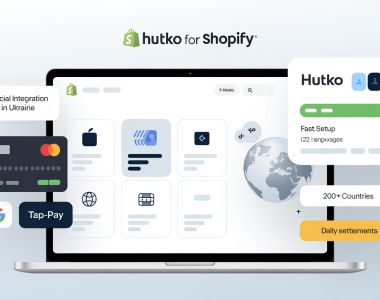Link building in 2025 isn’t about “many links at any cost.” It’s about a controlled strategy: high-quality donors, clever anchor text, topicality, indexability, and monitoring of page metrics (UR) and domain metrics (DR). In this longread, we’ll explore why businesses need links, why Web 2.0 is still relevant, the cost of high-quality marketplace placements, how the cascade approach works, and the advantages of the PromoPilot.link automation service with configurable cascades.
The content of the article
What is link building and why is it important
Link building is the systematic acquisition of external links to your website from relevant pages. For search engines, it’s a signal of trust and popularity: if relevant resources link to you, your content is valuable to users. In practice, properly configured link building:
- speeds up the indexing of new materials and updates;
- increases domain authority and landing pages (DR/UR growth);
- helps secure a position in the top search results for high-frequency/medium-frequency queries and long-tail keywords;
- diversifies the profile – reducing the risk of being overly focused on one type of source.
The key to results is not the quantity, but the structure of the link profile: what levels and how they are connected, what anchors are used, how the “weight” is distributed, how quickly and naturally the profile grows.
Web 2.0: Why It Still Works
Web 2.0 – blogging and content platforms where you can publish materials on subdomains or pages within the site. Previously, such links were considered “easy,” but today they are an effective tool, provided they are of high quality:
- Content Control: You own the text, can edit and build internal links;
- Startup Speed: Registration and publication take minutes;
- Cost: Often cheaper than outreach/PR and scalable with “grids” and cascades;
- Anchor List Flexibility: Easily balance branded, URL anchors, and thematic phrases.
Best Practices: Full-length articles (800–1500+ words), relevant images, internal links, useful content blocks, and natural anchors. Avoid creating “stubs” of 200-300 words—such posts are rarely indexed and don’t produce the desired effect.
DR and UR: What They Are, How to Use Them, and Why Check Them
DR (Domain Rating) is an Ahrefs metric for measuring the strength of a domain’s link profile on a logarithmic scale of 0-100. URL Rating is the strength of a specific page’s link profile, also on a scale of 0-100. A practical guideline: when selecting donors, look at DR, and when assessing the effectiveness of promotion, primarily at the URL of your landing page.
- When DR is important: selecting sites for L1 (links leading directly to your landing page) and strong L2;
- When URL is important: tracking the growth of the target landing page, the impact of internal links and “amplification” by cascades;
- How to grow URL: high-quality L1 + “width” of L2/L3 (see cascades below) + internal interlinking on donor articles.
How to quickly view competitor links for free
- Open Ahrefs Backlink Checker.
- Insert a competitor’s domain or a specific URL.
- Study top donors, anchor text, DR benchmarks, and link types.
- Save your findings: some can be replicated (similar sites, directories, Web 2.0), while others can be used as a quality benchmark.
Tip: Paid software is always useful for the final audit, but at the start, free browsing gives quick ideas for “quick wins.”
How much do quality links cost in 2025 (market realities)?
The market has become more expensive and selective: high DR/traffic, editorial requirements, and increased anti-spam measures. Below are price benchmarks for budget planning. The price ranges are averaged based on recent industry reviews and research (see the list of sources at the end of the article):
| Type | What is it | Price Guidelines (per link) | Comments |
|---|---|---|---|
| Guest Post | Author’s Post on an External Website | Average ~$300–$400; “high-quality” ones often ~$700–$950; Top media outlets charge $1,500+ and up. | Price depends on traffic/DR/subject matter and editorial terms. |
| Link insertion. | Inserting a link into an existing article. | ~$140–$360+. | Rarely available on truly strong platforms. |
| Digital PR. | Editorial mentions in the media. | $1,250–$1,500+ (and up) | Maximum authority and reach, but expensive |
| Web 2.0 | Own publications on platforms | Mostly free; The budget goes towards content and profile development. | The effect is higher in networks and cascades, with normal indexing. |
Conclusion: Expensive L1s are justified for key landing pages, but for broad coverage and faster indexing, it makes sense to support them with scalable L2/L3s on a moderate budget.
Cascade Link Building: Principles, Diagrams, and Examples
A cascade is a multi-level structure where L1 links to your landing page, L2 amplifies L1 publications, L3 amplifies L2, and so on. Due to the width and interlinking, the “weight” is better conveyed to the landing page, the chances of indexing increase, and the profile looks natural.
Basic Cascade Schemes
- “5–50–5000” (quick test): 5 L1 articles → 50 L2 publications → 5000 background L3 publications; Good for testing hypotheses for the mid-range cluster;
- “10–100–2000” (price/speed balance): Slightly more than L1 with an emphasis on the topic and UR of the landing page;
- “PR-L1 + massive L2/L3” (competitive niches): 1–3 strong L1 from outreach/PR + a wide “grid” of L2/L3;
- “Long Arc” (monthly): Increase in levels by sprints: M1 — L1/L2 start, M2 — L2/L3 finish, M3 — targeted L1, etc.
Anchor Policy for the Cascade
- L1: Predominantly branded and URL anchors, some thematic non-anchor ones; Precise anchors — targeted;
- L2: Thematic phrases, some branded ones, variable “diluters”;
- L3: Non-anchored phrases, URLs, brand mentions, and “natural” constructions.
Quality Control and Indexing
- Make sure L2/L3 texts are meaningful (800+ words, images, internal links);
- Cross-linking within a level increases the chance of indexing;
- The topic of the donors should correspond to the page (or at least section) being promoted.
PromoPilot: Automated cascading link building with a configurator
PromoPilot.link is a service that allows you to quickly assemble and launch cascades for a page’s task. The idea: you specify the URL, anchors, volume by level (L1/L2/L3), and topic—the system generates the publication structure and controls the “width” and coherence.
What’s useful in practice
- Flexible configuration: from a mini-cascade “5-50-5000” to custom schemes for competitive niches;
- Anchor list control: brand/URL/topic, percentage shares, and variations;
- Focus on the landing page URL: the structure is tailored to the growth of the promoted landing page;
- Indexation acceleration: width and interlinking increase the likelihood of indexing;
- Entry threshold: a starting test of the cascade is possible in about $30 per page (convenient for trying out the idea).
Example configurations for different goals
| Goal | Scheme | Anchors | Expectations |
|---|---|---|---|
| Quick test | L1×5 • L2×50 • L3×5000 | Brand/URL on L1, thematic on L2, “natural” on L3 | Checking indexing and URL growth over 2–8 weeks |
| Price/speed balance | L1×8–10 • L2×100 • L3×2000 | More thematic non-anchored keywords on L2 | Stabilizing mid-range keyword positions |
| High competition | PR-L1×2–3 + L2×150–250 + L3×3000–6000 | Specific anchors are dosed on L1, width on L2/L3 | Preparing for work on the high-frequency cluster |
Step-by-step instructions: how to set up a cascade in PromoPilot
- Collect input data: target URL, 5-10 brand and URL anchor variations, 10-30 thematic phrases.
- Conduct a quick competitor audit: use Ahrefs Backlink Checker to look at their donors, DRs, and link types.
- Choose a cascade scheme: starting with “5-50-5000” or a custom one for your niche.
- Set the configuration: volumes by L1/L2/L3 levels, anchor type shares, thematic tags.
- Run and monitor: check indexing and Landing page UR dynamics weekly.
- Adjust: add if necessaryL2/L3, change anchor percentages, launch targeted L1 campaigns.
How to measure results and timeframes
- Landing page URL: primary operational KPI; Growth indicates weight “delivery”;
- Index: Share of indexed L1/L2/L3 through search operators and webmaster panels;
- Cluster positions: Ranking by target low-frequency/mid-frequency and “tail” keywords;
- Timeframe: The first shifts with a correct structure are often visible in 2-8 weeks, but “stabilization” can take 2-3 months or more (depending on the niche).
Safety: What is allowed and what is not
Google has traditionally taken a strict approach to manipulative link schemes. To work safely:
- Create content for people, not just for show—even on Web 2.0;
- Maintain thematic relevance of donors and materials;
- Maintain natural anchor proportions, don’t overuse exact anchors;
- Build your profile gradually, avoiding unprovoked “explosions” on the site;
- Avoid toxic networks and outright spam—the risks aren’t worth the reward.
Typical Mistakes
- Biding only on DR without considering the landing page’s UR;
- A narrow profile of one type of donor (without diversification);
- Weak L2/L3 texts → poor indexing and poor delivery Weight;
- Biasing precise anchors → filter risks;
- Lack of monitoring and adjustments based on results.
FAQ
How many links do you need to achieve results?
Depends on the niche, competition, and content quality. Often, a good start is 5-10 high-quality L1 links with cascading L2/L3 boosts.
Does Web 2.0 produce a noticeable effect?
Yes, with full-fledged articles, topicality, and well-thought-out interlinking within the network. “Thin” Web 2.0 links alone are ineffective.
What is more important: DR or UR?
DR — for donor selection. UR — for measuring the real impact on your landing page.
Is it possible to combine PR/outreach and cascades?
This is the optimal strategy: targeted strong L1 + scalable L2/L3 to accelerate and consolidate results.




